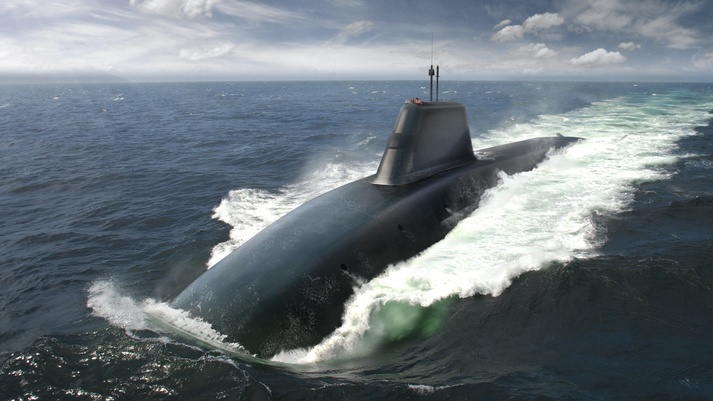
Systems
The first of the new submarines that will carry Trident missiles when the UK's nuclear deterrent is renewed is to carry on the Royal Navy's most famous name. The submarine, which will be built at BAE Systems' manufacturing site at Barrow-in-Furness, Cumbria, is to be called HMS Dreadnought and, as is traditional, the three other nuclear missile-carrying submarines will be known as the Dreadnought class and their names will all begin with D.
Dreadnought will replace the Vanguard-class submarines that currently carry Britain's nuclear deterrent. Vanguard, Victorious, Vigilant and Vengeance began to come into service in 1993. Construction of Dreadnought began last month. No date has yet been given for Dreadnought's entry into service, or of any other of the submarine’s specifications, but the cost of building the four submarines is expected to be around £31bn.
The Dreadnought name has been used for nine other Royal Navy ships in the past, the first being sailed by Sir Francis Drake when he fought the Spanish Armada in 1588. Another was one of Nelson's fleet at the Battle of Trafalgar. The most famous Dreadnought was probably a battleship launched in 1906, which at the time the largest was the most heavily armed and armoured naval ship in the world, and which started an arms race in the run-up to the First World War (see box below). The Royal Navy's first nuclear powered submarine, launched in 1956, was also called Dreadnought.
Edwardian escalation warning
The Engineer covered the launch of the most famous HMS Dreadnought in February 1906. The ship was launched at Portsmouth by King Edward VII to much public interest. "She has been frequently spoken of as if she marked an entirely new departure in naval architecture. This is not strictly true," the journal reported. "She evolved from types which preceded her, and the apparent jump is caused, not a little, to the fact that her immediate predecessors are still far from completion." The public interest, the Engineer commented, was due to the ship’s size, turbine engines, fighting power, the speed it was built, and the secrecy with which the project was surrounded.
In an almost eerie paragraph, the Engineer's report notes the geopolitical significance of the Dreadnought project. "We are prone to forget that the peace of Europe reposes in the maintenance of a certain balance of power, which might be easily upset by changes in one Navy or the other, but we must not be blind to the significance of the speed with which the Dreadnought is being built. The Dreadnought… is meant as an object lesson which those who are intended to learn cannot fail to appreciate. We know that she is closely observed, and that other nations will at the earliest moment seek to produce a ‘reply’ to her, and it is clearly wise policy to retain the lead which we possess by concealing as long as possible details of her design and strength."





Poll: Should the UK’s railways be renationalised?
I think that a network inclusive of the vehicles on it would make sense. However it remains to be seen if there is any plan for it to be for the...